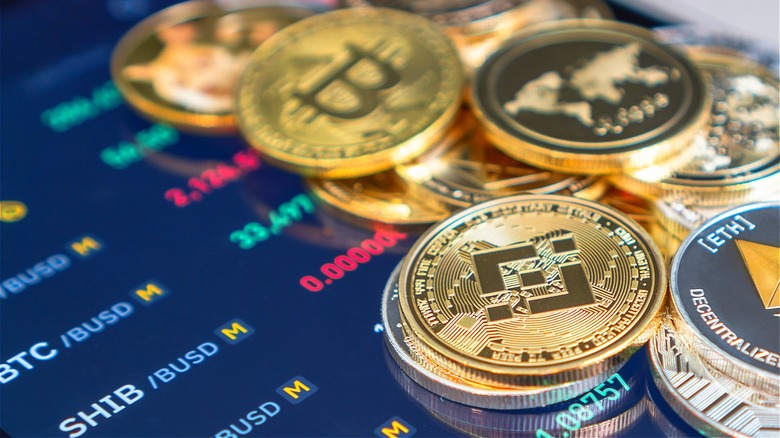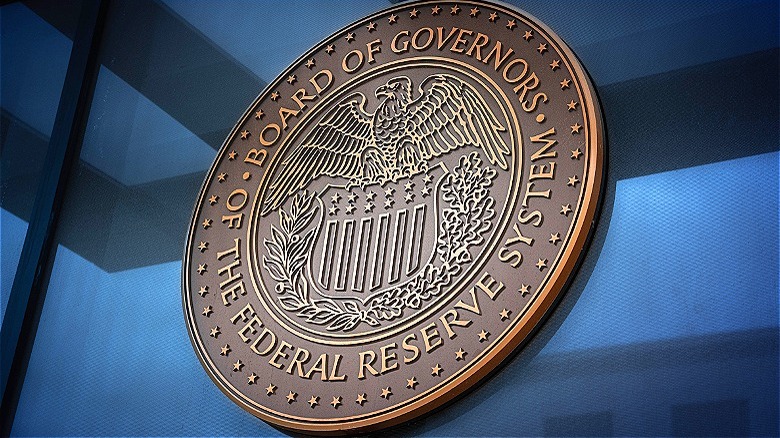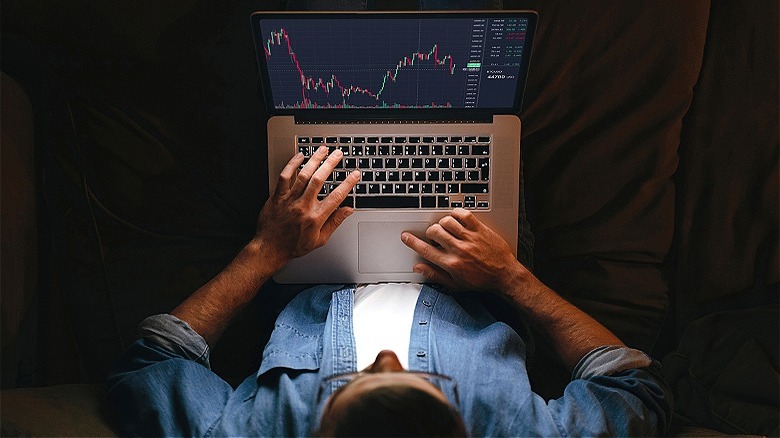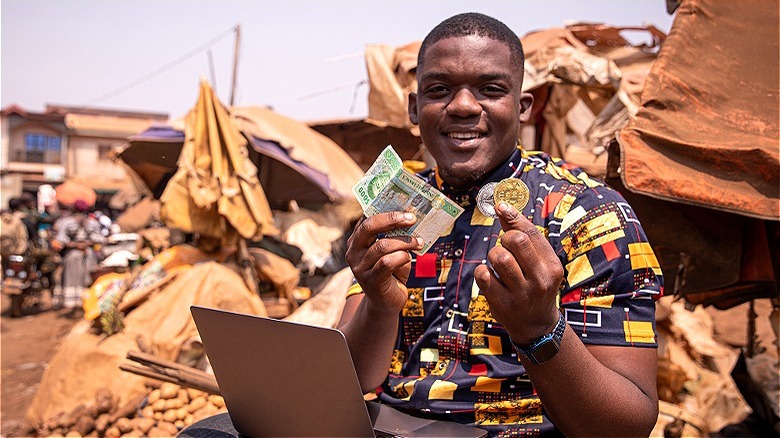Will Digital Currency Ever Replace Physical Cash?
While envisioned as the currency of the future, the news surrounding digital currencies in the last year has been anything but confidence building. Just look at the tragedy of FTX for example, a $32 billion cryptocurrency exchange that imploded after its founder was caught fraudulently propping up his company with client accounts, which became one of the worst business failures in U.S. history. To be fair, there's plenty of fraud related to old-school dollars and cents, and yet the greenback has remained a standard ever since the first dollar was printed with George Washington's face on the front in 1862.
Digital currency is just a digital or electronic form of money that stays in a wallet, a cloud, or a digital exchange, and allows you to buy goods and services in the same way paper currency does. Different types of digital currency, including ether and bitcoin, might still be in the process of regulation, but the U.S. central bank is taking the prospects for digital currency seriously enough to issue its own central bank digital currency (CBDC) regulated by the Federal Reserve. The most recent CBDC tracker lists 162 countries in various stages of development of their own digital currency, including research, proof of concept, and pilots.
According to the American think tank Atlantic Council, the United States has assembled an interagency made up of staff from the Federal Reserve, the National Security Council, and the Treasury Department to study digital currency for the States.
Central banks see the value in digital currency
Bitcoin, ether, litecoin, and other cryptocurrencies get their value from an agreed-upon valuation between parties based on the perception of it being a hedge against tough inflationary pressures, much like gold bars. It's also based on the idea of supply and demand, where scarcity of something can raise its value or, like shares on the stock market, the more people buy into a particular digital currency the higher its value becomes. The bottom line is that central banks around the world are investing serious research into their digital currencies because they clearly see value in doing so.
At the 2023 Singapore FinTech Festival, Kristalina Georgieva, managing director at IMF, said of central bank digital currencies, "CBDCs would offer a safe and low-cost alternative [to cash]. They would also offer a bridge to go between private monies and a yardstick to measure their value, just like cash today which we can withdraw from our banks" (via CNBC). Georgieva went on to point out how having faster cross-border and international transactions without spending on foreign currencies could help bolster financial inclusion for countries with lower-valued dollars.
Singapore's Monetary Authority called cash a soon-to-be relic of the past that won't work well alongside cash. The U.S. Federal Reserve, meanwhile, views digital currency as a way for the public to make digital payments without the need for deposit insurance or material assets, like gold, to represent its value. In 2022, the Bank for International Settlements surveyed 86 central banks, finding that 93% of them said they were "engaged in some form of [CBDC]."
Is digital currency more financially inclusive?
Kristalina Georgieva mentioned financial inclusivity as a benefit of digital currencies, but what exactly does that mean? In the book "Central Bank Digital Currency's Role in Promoting Financial Inclusion," digital currency is described as low-risk in terms of credit and/or deposits and can be used for offline transactions. For lower-income countries, this means a way into the global market for 1.4 billion people. That would be why 60% of the world's low-income nations are invested in financial inclusion through digital currencies issued by their central banks. The lowered cost of making transactions with digital currency is also a fee that wouldn't be passed on to low-income users, making it another way to close the gap between the haves and have-nots.
In a piece written for Forbes, Brandon Zemp, author of "The Future Economy: A Crypto Insider's Guide to the Tech Dismantling Traditional Banking," explained how people living in poorer nations without access to banking services or even bank accounts could have, through CBDCs, access to a currency that could be used in the same way money withdrawn from a bank is. Not to mention that a trustworthy, safe way of transferring money across borders could happen much quicker. The BRICS group of nations — Brazil, Russia, India, China, South Africa — spoke in August 2023 about a joint digital currency that would free them from their reliance on the United States dollar and Western control. Further proof that digital currencies are coming one way or the other.
Digital currency's impact on international payments
The World Economic Forum sees a few benefits of digital currency as it pertains to transferring money across the globe. For one, digital currencies will do away with waiting times of 24 hours to several days since the digital cash can be sent to its destination in seconds. Since the middlemen — financial institutions and regulatory bodies — aren't in the picture quite yet, no-fee money transfers are currently a reality for anyone with digital currency. However, whether or not that will stay the same once the central banks get a hold of the system remains to be seen. Also, alternative credit agreements could also arise from digital currencies since records of transactions could be used to access credit in place of financial bank records. Global transactions for businesses and individuals should also be cheaper while a standard system across the board should ensure currencies move within compliance of international trade and banking regulations.
Digital media resource Cointelegraph notes that cross-border transactions secured by blockchain technology happen in four to six seconds, with no intermediaries, a distributed ledger of transactions, along with security features like multi-party authorization and sophisticated fraud detection. As of 2022, India has become the most populous nation in the world with 1.43 billion people. Additionally, India has the largest number of citizens living outside the country with more than 2.7 million in the United States alone. It's easy to imagine how a digital rupee easily transferred between countries within seconds could be of benefit to the global economy.
The safety of using digital currency
While crypto investors may argue the benefits of bitcoin vs. ether, security and reliability are at the top of central banks' concerns. The blockchain network of end-to-end transactional records and asset security go even beyond their developers' ability to override, with private blockchain networks being controlled by a centralized entity — say, a central bank — to ensure higher security and regulatory compliance necessary to guard against fraud and cyberattacks, as Cointelegraph explains.
Speaking to Utah's KSL-TV, Matt Schulz, a LendingTree chief credit analyst, suggests that a digital wallet on your phone is safer than cash since your phone can be equipped with extra security features like passcodes, thumb or eye scans, multi-factor authentication, and encrypted banking information beyond the reach of most common thieves. In short, you'd be better off losing your phone than cash since digital currency is immaterial and difficult to access for outsiders.
In 2021, the Brookings Institution pointed to COVID stimulus checks, many of which were either delivered late or not at all because they were lost in the mail and/or stolen, as a case where the ability for a central bank to automatically send out digital payments quickly and securely would have made all the difference. Money laundering and other proceeds of crime would also be impaired by a digital currency that makes paper money obsolete with a secure ledger of every transaction from start to finish.
Digital currency equals 24-hour banking
Bitcoin mining pays fees to cryptocurrency miners who verify transactions in the blockchain with application-specific integrated circuit computers that ensure transactions are legitimate. Even though one of these ASIC computers can run upward of $10,000, there's so much bitcoin to mine potentially since cryptocurrency transactions never stop. While banks and credit unions are open during regular business hours, crypto networks are open 24 hours a day, 365 days a year. For example, Kraken, a Canadian cryptocurrency wallet where users can buy and sell digital currencies like stocks in over 190 countries, boasts equally consistent customer support for a market that never sleeps.
With the market caps for several digital currencies going into the billions of dollars (one bitcoin is currently worth $66,115), it shouldn't be surprising that Wall Street seems threatened by the rise of crypto. As reported by Bloomberg News, the American Bankers Association and the Bank Policy Institute issued a statement in 2022 related to the competition that a Fed-backed digital currency would create for private bank deposits, limiting available credit for enterprises and individuals.
The ABA and BPI even go as far as to say, "By attracting deposits away from banks, particularly during a period of economic stress, a CBDC likely would undermine the commercial banking system in the United States, and severely constrict the availability of credit to the economy." While the jury may still be out on the voracity of these statements, one thing is for certain: Digital currency is coming, whether you like it or not.





